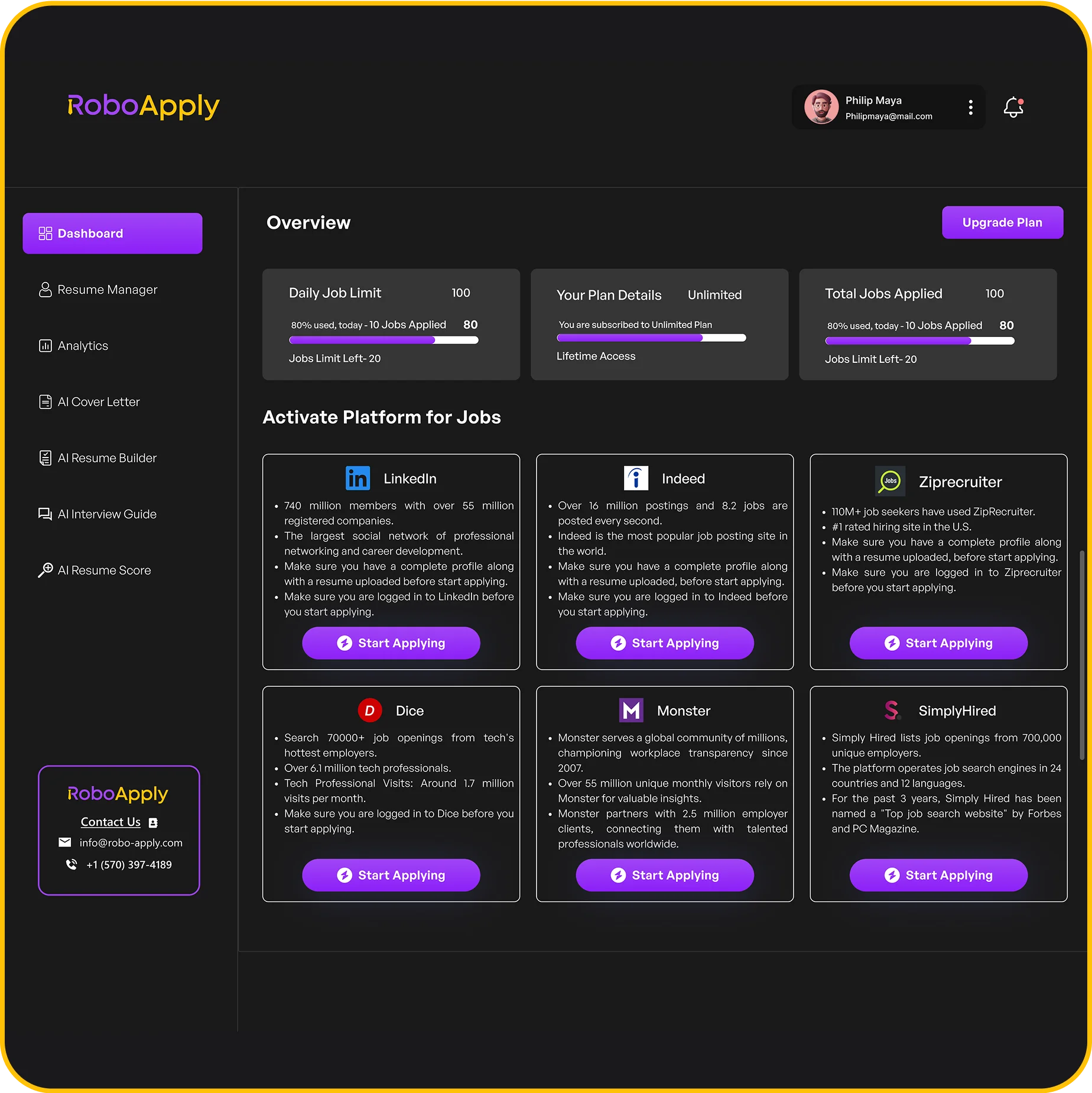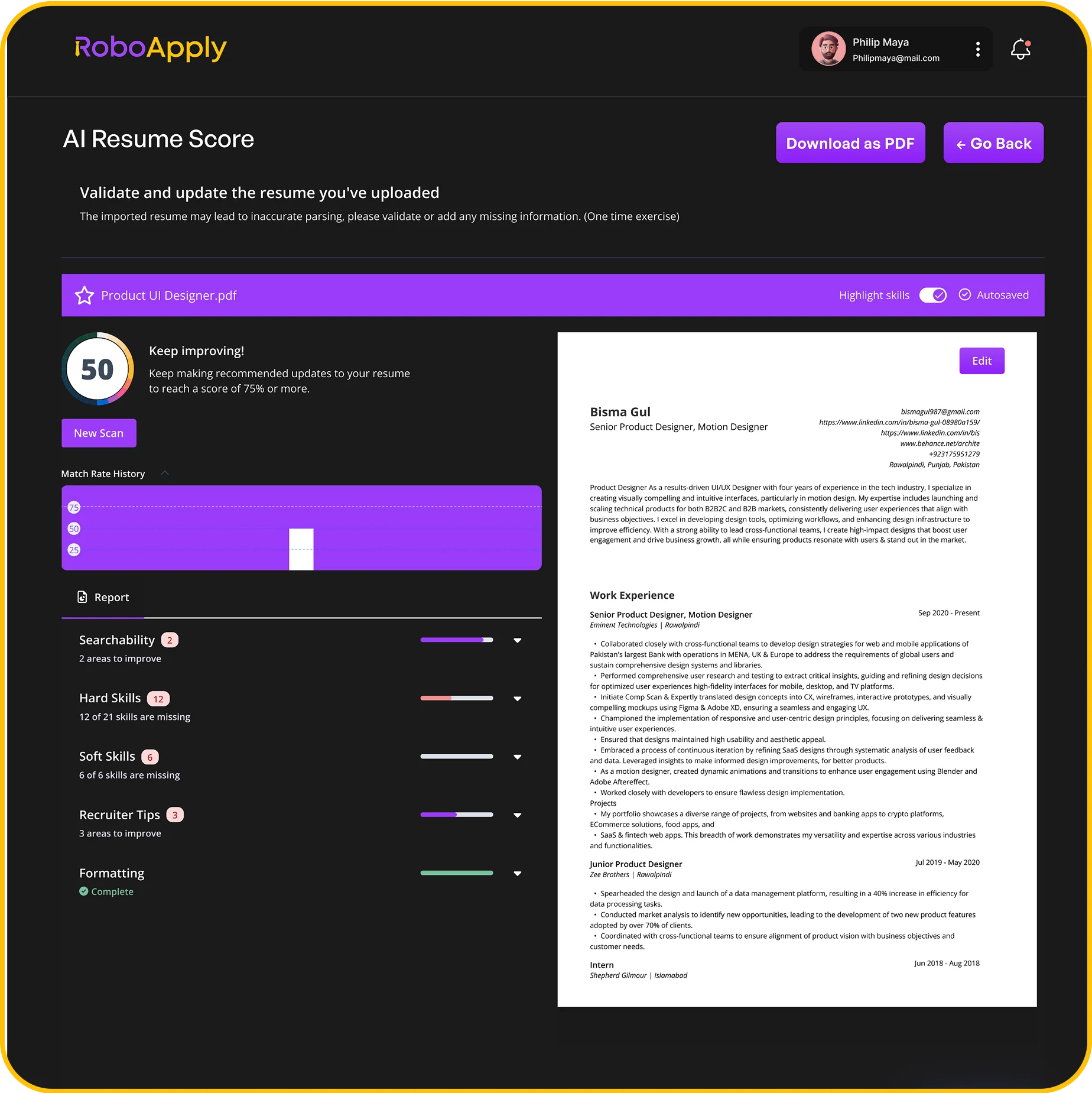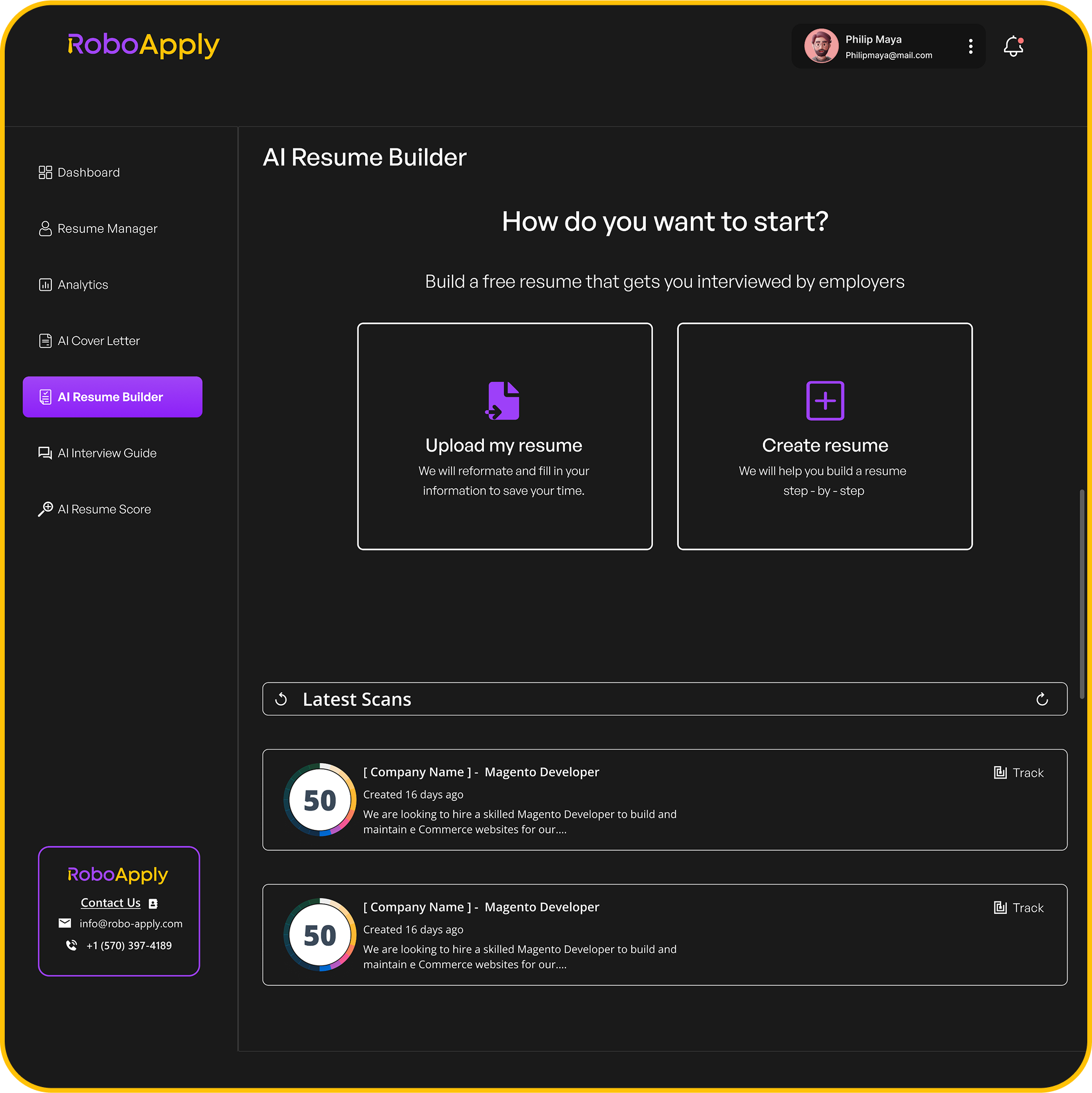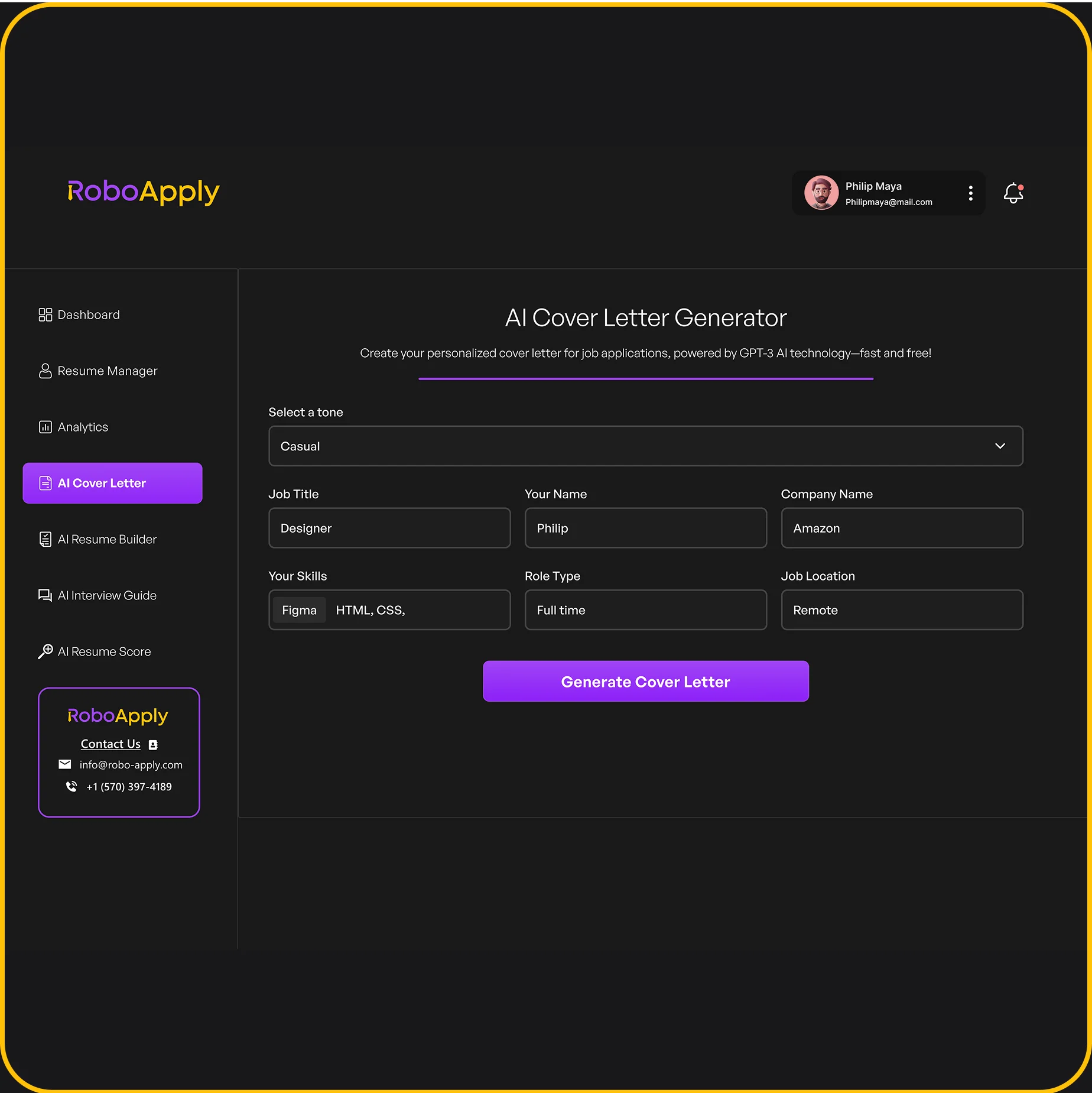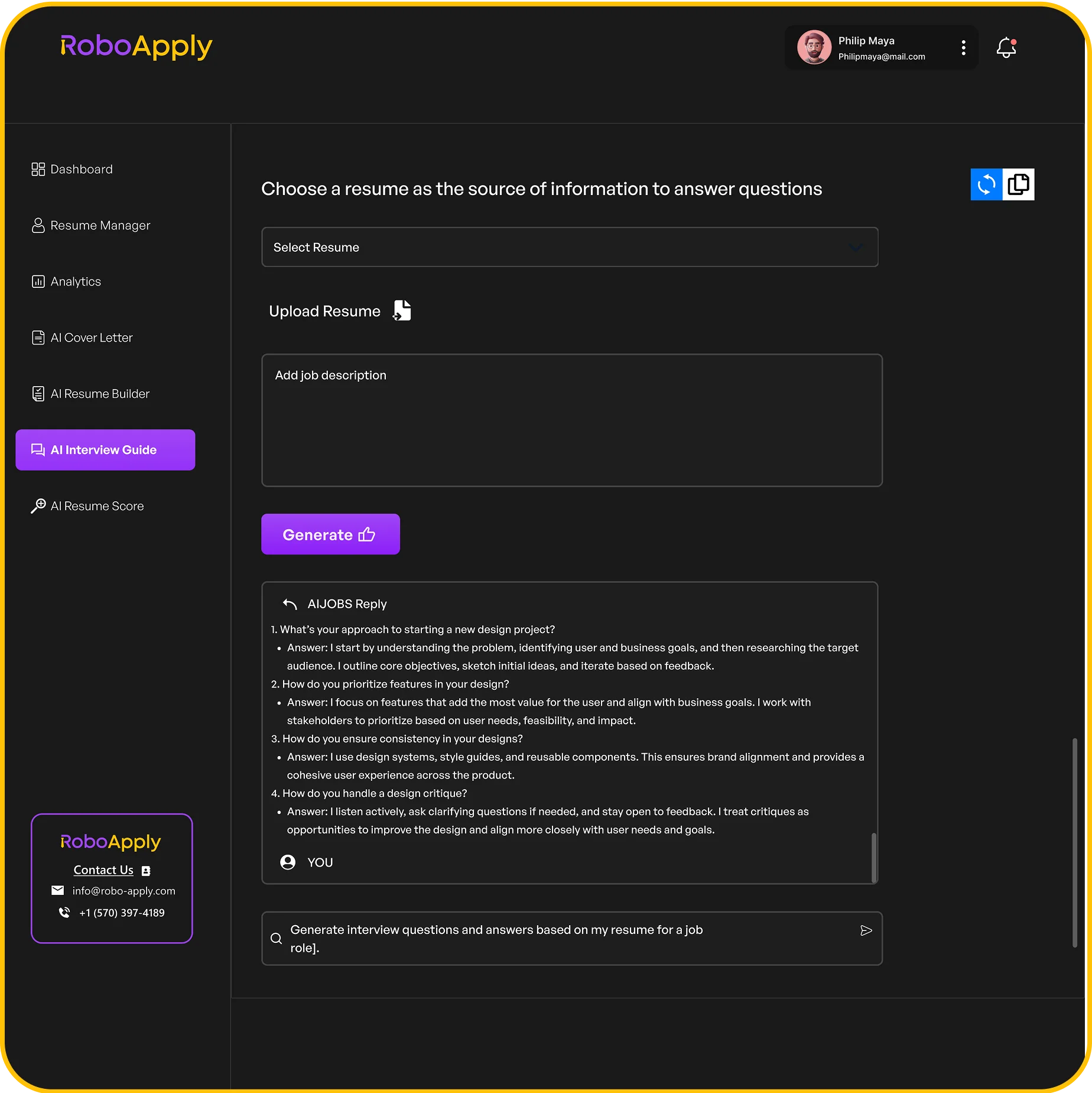Crafting a standout cover letter is essential when applying for medical assistant positions in 2025. It’s not just a formality; it’s your chance to showcase your skills, experiences, and personality to potential employers. A well-written cover letter can complement your resume and help you stand out in a competitive job market. In this article, we’ll explore how to create an effective cover letter example for medical assistant roles that captures attention and highlights your qualifications.
Key Takeaways
- A cover letter is crucial for showcasing your unique qualifications and personality.
- Tailor your cover letter to the specific job and employer to make a strong impression.
- Use clear formatting and a professional tone to enhance readability.
- Highlight relevant skills and experiences that align with the job requirements.
- Avoid common mistakes like generic language and typos to maintain professionalism.
Understanding the Importance of a Cover Letter
Why a Cover Letter Matters for Medical Assistants
In the competitive field of healthcare, a well-crafted cover letter can significantly increase your chances of landing an interview. While a resume provides a factual overview of your skills and experience, a cover letter allows you to showcase your personality, enthusiasm, and communication skills. It’s your opportunity to make a personal connection with the hiring manager and explain why you are the ideal candidate for the position. Think of it as your chance to tell your story and highlight what makes you unique.
How a Cover Letter Complements Your Resume
Your resume is a summary; your cover letter is the expansion. A cover letter gives you the space to elaborate on specific experiences mentioned in your resume and explain how they directly relate to the requirements of the medical assistant position. It allows you to provide context, demonstrate your understanding of the role, and highlight achievements that might not be fully captured in your resume. It’s also a chance to show, not just tell, your qualifications. For example, instead of just saying you have strong organizational skills, you can describe a situation where you successfully managed patient records and appointments. Make sure you check out some cover letter examples to get a better idea.
Common Mistakes to Avoid in Your Cover Letter
Several common pitfalls can undermine the effectiveness of your cover letter. These include:
- Using generic language and templates without tailoring them to the specific job and employer.
- Failing to proofread carefully for grammatical errors and typos.
- Focusing solely on your own needs and desires rather than addressing the employer’s requirements.
- Making unsubstantiated claims about your skills and abilities.
- Exceeding one page in length.
Avoiding these mistakes will help you create a compelling and professional cover letter that stands out from the competition. Remember, your cover letter is often the first impression you make on a potential employer, so make it count.
Key Components of a Medical Assistant Cover Letter
Essential Elements to Include
A medical assistant cover letter needs certain things to even be considered. First, make sure you have a professional header with your contact information. Then, address the hiring manager directly if possible – it shows you did your homework. The body of your letter should highlight your skills and experience, especially those that match the job description. Finally, end with a strong closing that includes a call to action. These elements are essential for a good first impression.
How to Structure Your Cover Letter
Think of your cover letter as a story. Start with an engaging introduction that grabs the reader’s attention. The middle paragraphs should detail your relevant skills and experiences, using specific examples to back up your claims. The conclusion should restate your interest and invite the employer to contact you. A well-structured letter is easy to read and shows you can organize your thoughts effectively. Here’s a basic structure:
- Introduction: Briefly introduce yourself and state the position you’re applying for.
- Body Paragraphs: Detail your skills and experiences, relating them to the job requirements.
- Closing Paragraph: Reiterate your interest and include a call to action.
Tips for Writing a Compelling Introduction
Your introduction is your first chance to make a good impression. Start with a strong opening line that grabs the reader’s attention. Mention the specific position you’re applying for and explain why you’re interested in it. If possible, reference something specific about the company or the role that excites you. A compelling introduction sets the tone for the rest of your letter and encourages the reader to keep reading. It’s important to tailor your skills to the job description.
A good introduction should be concise, engaging, and relevant. It should immediately convey your enthusiasm for the position and your understanding of the employer’s needs.
Here are some tips:
- Start with a hook: Use an interesting fact or a relevant anecdote to grab the reader’s attention.
- State your purpose: Clearly state the position you’re applying for and why you’re interested.
- Show your enthusiasm: Let your passion for the role shine through.
Personalizing Your Cover Letter for Medical Assistant Roles
Researching the Employer
Before you even start typing, do your homework! It’s not enough to just know the name of the clinic or hospital. Dig deeper. What are their values? What kind of patient care do they emphasize? What are their recent achievements or initiatives? This information will help you tailor your cover letter to show that you’re not just looking for any job, but that you specifically want to work for them.
Tailoring Your Skills to the Job Description
Don’t just list your skills; connect them directly to what the employer is seeking. Read the job description carefully and identify the key requirements. Then, in your cover letter, provide specific examples of how you’ve demonstrated those skills in the past. For example, if the job description mentions experience with electronic health records (EHR), you could say:
- "Proficient in using EHR systems, including data entry, retrieval, and report generation."
- "Successfully transitioned a paper-based record system to a fully electronic system, resulting in improved efficiency and accuracy."
- "Trained new staff members on the use of EHR software, ensuring compliance with HIPAA regulations."
Using Specific Examples to Stand Out
Generic statements are a cover letter’s worst enemy. Instead of saying "I’m a hard worker," show them! Use the STAR method (Situation, Task, Action, Result) to structure your examples. Think about a time you went above and beyond for a patient, resolved a difficult situation, or improved a process. Quantify your achievements whenever possible. Numbers speak volumes. For example, instead of saying "I improved patient satisfaction," say "I implemented a new patient follow-up system that increased patient satisfaction scores by 15% in three months." This shows you understand the importance of a cover letter and how to make yours shine.
Personalizing your cover letter shows you’ve taken the time to understand the employer’s needs and how you can contribute to their success. It demonstrates your genuine interest in the position and sets you apart from other candidates who submit generic applications.
Formatting Your Cover Letter Effectively
Choosing the Right Font and Size
Selecting the appropriate font and size is important for readability. A clean, professional font like Arial, Calibri, or Times New Roman is generally recommended. Font size should be between 10 and 12 points to ensure the text is easy to read. Consistency in font and size throughout the document is key to maintaining a polished look. Avoid using overly decorative or script fonts, as they can be difficult to read and may appear unprofessional. Think of it like choosing the right frame for a picture; it should complement, not distract.
Setting Margins and Spacing
Proper margins and spacing enhance the visual appeal and readability of your cover letter. Standard margins of one inch on all sides are generally acceptable. Single spacing within paragraphs and double spacing between paragraphs is a common practice. Adequate white space prevents the letter from appearing cluttered and makes it easier for the hiring manager to scan the document quickly.
Creating a Professional Header
Your cover letter should begin with a professional header that includes your name, address, phone number, and email address. This information should be aligned to the left or centered at the top of the page. Including the date below your contact information is also standard practice. Make sure your email address is professional; avoid using nicknames or unprofessional language. This header serves as your digital business card, making it easy for the employer to contact you. For more information, you can check out cover letter resources.
A well-formatted cover letter demonstrates attention to detail and professionalism. It shows the hiring manager that you care about the presentation of your application and are capable of producing high-quality work.
Here’s a quick guide to formatting:
- Use a professional font (Arial, Calibri, Times New Roman).
- Set margins to one inch on all sides.
- Use single spacing within paragraphs and double spacing between paragraphs.
- Include a professional header with your contact information.
Crafting a Strong Opening Statement
How to Grab Attention from the Start
Your cover letter’s opening is prime real estate. It’s your first, and possibly only, chance to make a solid impression. Ditch the generic greetings and aim for something that immediately sets you apart. Instead of "To Whom It May Concern," try to find the hiring manager’s name. A little research goes a long way.
- Start with a compelling achievement.
- Mention a shared connection.
- Show genuine enthusiasm for the company’s mission.
A strong opening statement is not just about what you say, but how you say it. It should reflect your personality and passion for the role.
Including Your Most Relevant Experience
Don’t make the reader guess why you’re the perfect fit. Your opening should clearly state your most relevant experience and how it aligns with the job requirements. If you’ve got years of experience in a specific area, highlight that upfront. If you’re a recent graduate, focus on internships, volunteer work, or relevant coursework.
Consider this table:
| Experience | Relevance to Medical Assistant Role |
|---|---|
| Phlebotomy Skills | Essential for drawing blood samples accurately and efficiently. |
| Patient Care | Directly relates to providing comfort and support to patients. |
| Electronic Records | Necessary for managing patient information and maintaining records. |
Establishing a Connection with the Employer
Show that you’ve done your homework. Reference something specific about the employer – a recent project, a company value, or a news article. This demonstrates that you’re not just sending out a generic cover letter. It shows you’re genuinely interested in their organization. Think about how your skills can directly benefit them. For example, if the company is known for its patient-centered approach, highlight your compassionate care skills. This connection makes your application more memorable and shows you understand their needs. A well-crafted opening can significantly increase your chances of landing an interview. Make sure to review cover letter components before submitting.
Highlighting Relevant Skills and Experiences
Identifying Key Skills for Medical Assistants
To really make your cover letter shine, you need to zero in on the skills that employers are actively seeking. Don’t just list everything you’ve ever done; instead, carefully read the job description and identify the core competencies they value. This might include things like:
- Taking patient vitals.
- Administering injections.
- Electronic health record (EHR) proficiency.
- Patient communication and education.
- Assisting with minor surgical procedures.
It’s not enough to simply state that you possess these skills. You need to provide concrete examples of how you’ve used them in previous roles. This is where you can really set yourself apart from other candidates.
Showcasing Clinical and Administrative Abilities
Medical assistants need a blend of clinical and administrative skills. Your cover letter should reflect this. For clinical skills, describe situations where you directly assisted patients, highlighting your competence and compassion. For administrative skills, talk about your experience with scheduling appointments, managing records, and handling insurance paperwork. Demonstrate how you balance these two areas effectively.
Consider this table to help you organize your thoughts:
| Skill Category | Example | Outcome |
|---|---|---|
| Clinical | Administered vaccinations to 50+ patients daily during flu season. | Maintained high vaccination rates and patient satisfaction. |
| Administrative | Managed patient records using EHR proficiency with 100% accuracy. | Streamlined record-keeping and reduced errors. |
| Communication | Educated patients on medication instructions and post-operative care. | Improved patient understanding and adherence to treatment plans. |
Using Metrics to Demonstrate Success
Whenever possible, use numbers and metrics to quantify your achievements. Instead of saying "I improved patient satisfaction," say "I improved patient satisfaction scores by 15% based on post-visit surveys." These quantifiable results make your accomplishments more tangible and impressive. Think about how you can apply this to various aspects of your experience. For example:
- Reduced appointment wait times by X minutes.
- Increased patient flow by Y%.
- Successfully managed Z number of patient charts.
By providing concrete data, you show employers that you’re not just capable, but also results-oriented. Remember to tailor your nursing cover letter to each specific job, highlighting the skills and experiences that are most relevant to the position.
Writing a Memorable Closing Statement
How to End on a Strong Note
Your closing statement is your final opportunity to leave a lasting impression. It’s more than just a formality; it’s a chance to reiterate your interest and qualifications. A strong closing can be the deciding factor that prompts a hiring manager to move your application forward. Think of it as the final note in a well-composed song – it should resonate and leave the audience wanting more. Don’t just fade out; make a statement. You want them to remember you and your enthusiasm for the medical assistant role. Make sure you show gratitude to the recruiters, who have assessed your profile at the end of your medical assistant cover letter.
Including a Call to Action
A call to action (CTA) is a direct request for the next step in the hiring process. It demonstrates your proactive nature and eagerness to move forward. Instead of passively waiting, you’re actively inviting the employer to engage with you. A good CTA is clear, concise, and confident. For example, you might state your availability for an interview or express your desire to discuss how your skills and experience align with the needs of the clinic. It’s about taking initiative and showing that you’re serious about the opportunity. You can also close off your medical assistant cover letter by promising how you see yourself excelling in the role and the positive impact you’d bring about. A sentence that encourages some further action on the recruiter’s end could also be a good way to close off the communication (e.g. provide your availability for an interview).
Expressing Enthusiasm for the Role
Genuine enthusiasm is contagious. It shows that you’re not just looking for any job, but that you’re specifically interested in this role at this organization. Expressing your excitement can set you apart from other candidates who may seem indifferent. Let the hiring manager know why you’re passionate about the medical assistant position and how it aligns with your career goals. This isn’t about generic praise; it’s about highlighting specific aspects of the role or the organization that genuinely excite you. A brief expression of appreciation can leave a positive impression. Discover how to effectively conclude a cover letter by emphasizing your qualifications, incorporating a strong call to action, and maintaining a professional tone.
In short, your closing statement should be a powerful summary of your interest and qualifications, combined with a proactive call to action. It’s your last chance to make a memorable impression and encourage the employer to take the next step.
Common Cover Letter Mistakes to Avoid
It’s easy to slip up when writing a cover letter. Even small errors can make a big difference in how a hiring manager perceives you. Let’s look at some common pitfalls and how to avoid them.
Generic Language and Clichés
Using generic phrases is a big no-no. Hiring managers can spot a template from a mile away. Originality is key. Instead of saying you’re a "hard worker" or a "team player," show it with specific examples. For instance, describe a time you went above and beyond to help a patient or collaborated with colleagues to solve a problem. Tailor your language to the specific job description and the company’s values. This shows you’ve done your research and are genuinely interested in the position.
Neglecting to Proofread
Nothing screams unprofessional like typos and grammatical errors. Always, always proofread your cover letter before submitting it. It’s best to have a fresh pair of eyes look it over too.
- Check for spelling errors.
- Ensure your grammar is correct.
- Verify that your formatting is consistent.
I once submitted a cover letter with a glaring typo in the first paragraph. I didn’t even get an interview. It taught me a valuable lesson about the importance of proofreading. Now, I always triple-check everything before hitting send.
Failing to Address the Hiring Manager
Addressing your cover letter to "To Whom It May Concern" is a missed opportunity to make a personal connection. Take the time to research the hiring manager’s name. A little effort goes a long way. If you can’t find a name, try calling the company’s HR department. If all else fails, address it to the hiring team or the specific department. Showing you’ve put in the effort to find the right person demonstrates your attention to detail and genuine interest in the role. Using the correct name shows you care.
Here’s a quick guide:
| Scenario | Salutation |
|---|---|
| Hiring manager’s name is known | Dear Mr./Ms. [Last Name], |
| Hiring manager’s name cannot be found | Dear Hiring Team, or Dear [Department] Team, |
Cover Letter Example for Medical Assistant Positions
Analyzing a Sample Cover Letter
Let’s look at a sample cover letter for a medical assistant position. We’ll break down what makes it effective and how you can adapt it to your own needs. Remember, a strong cover letter complements your resume and shows why you’re the right fit. It’s not just repeating your resume; it’s about highlighting your unique qualifications and enthusiasm.
Breaking Down Each Section
A typical medical assistant cover letter includes these sections:
- Header: Your contact information.
- Greeting: A professional salutation (e.g., "Dear Hiring Manager,").
- Introduction: Briefly introduce yourself and state the position you’re applying for.
- Body: Highlight your relevant skills and experience.
- Closing: Thank the reader and express your interest in an interview.
Each section plays a vital role in presenting you as a qualified candidate. The introduction should grab attention, the body should showcase your abilities, and the closing should leave a lasting positive impression.
What Makes This Example Effective
So, what makes a good cover letter stand out? Here are a few key elements:
- Tailored Content: The letter is customized for the specific job and employer.
- Quantifiable Achievements: It includes specific examples of your accomplishments, ideally with numbers or metrics.
- Strong Action Verbs: It uses action verbs to describe your skills and experience.
- Enthusiasm: It conveys your genuine interest in the position and the organization.
A well-crafted cover letter demonstrates your communication skills and attention to detail. It shows you’ve taken the time to research the employer and understand their needs. By following these guidelines, you can create a cover letter that helps you land your dream job as a medical assistant.
Leveraging Technology in Your Cover Letter
Using AI Tools for Writing Assistance
AI writing tools are becoming more common, and they can help you create a solid first draft. Think of them as a starting point. They can assist with grammar, sentence structure, and even suggest relevant keywords. However, don’t just copy and paste what they give you. Always personalize the content to reflect your own voice and experiences. It’s about using AI to boost your efficiency, not replace your personal touch. For example, you can use an AI cover letter writer to get started.
Incorporating Keywords for ATS
Applicant Tracking Systems (ATS) are used by many healthcare facilities to filter applications. To make sure your cover letter gets noticed, include relevant keywords from the job description. These might be specific skills, certifications, or software proficiencies. Don’t stuff your cover letter with keywords, though. Use them naturally within the context of your sentences. Think about what the employer is looking for and make sure those terms are present.
Digital Formatting Tips
Your cover letter needs to look good on a screen. Here are some things to keep in mind:
- Use a clean, readable font like Arial or Calibri.
- Keep your paragraphs short and to the point.
- Save your cover letter as a PDF to preserve the formatting.
Make sure your digital signature looks professional. You can create one using a stylus or by inserting an image of your signature. A well-formatted digital cover letter shows that you’re tech-savvy and pay attention to detail.
The Role of Soft Skills in Your Cover Letter
Importance of Interpersonal Skills
In the medical field, technical skills are a must, but interpersonal skills are what truly set candidates apart. A medical assistant is often the first point of contact for patients, making their ability to communicate effectively and empathetically crucial. Think about it: patients are often anxious or in pain. Your cover letter should show you can handle these situations with grace and understanding.
Demonstrating Empathy and Compassion
It’s not enough to just say you’re empathetic; you need to show it. Use specific examples from your past experiences. Did you help a nervous patient feel more comfortable before a procedure? Did you go the extra mile to explain complex medical information in a way they could understand? These are the kinds of stories that will resonate with hiring managers. Consider these points when crafting your cover letter:
- Describe a situation where you showed compassion.
- Explain how your empathy improved a patient’s experience.
- Highlight any positive feedback you received related to your patient care skills.
Highlighting Teamwork and Collaboration
Medical assistants rarely work in isolation. They’re part of a team that includes doctors, nurses, and other healthcare professionals. Your cover letter should demonstrate your ability to work collaboratively and contribute to a positive team environment. Mention times when you’ve successfully collaborated with others to achieve a common goal. Maybe you helped streamline a process, or perhaps you assisted a colleague during a busy period. These examples show you’re a team player. When highlighting teamwork, consider these points:
- Describe a time you worked effectively in a team.
- Explain your role and contribution to the team’s success.
- Highlight any positive outcomes resulting from your team collaboration.
Soft skills are often overlooked, but they are incredibly important in the medical field. They can make the difference between a good medical assistant and a great one. Make sure to highlight these skills in your cover letter to show employers that you have what it takes to succeed in the role. Don’t just list them; provide examples of how you’ve used them in the past.
Here’s a simple table to illustrate the importance of soft skills:
| Soft Skill | Why It Matters |
|---|---|
| Communication | Clear instructions, patient comfort |
| Empathy | Builds trust, reduces anxiety |
| Teamwork | Efficient workflow, positive environment |
| Problem-solving | Quick solutions, improved patient outcomes |
| Time Management | Prioritizing tasks, efficient operations |
Final Tips for a Winning Cover Letter
Reviewing and Revising Your Draft
Okay, you’ve written your cover letter. Great! But don’t just send it off yet. Think of your first draft as a lump of clay – it needs shaping. Carefully review your cover letter for any errors in grammar, spelling, or punctuation. It’s easy to miss mistakes when you’ve been staring at the same document for hours. Read it out loud. Seriously, do it. It helps you catch awkward phrasing and sentences that don’t quite flow. Make sure your sentences are clear and concise. Remove any unnecessary words or phrases. A shorter, punchier cover letter is almost always better than a long, rambling one. And, of course, double-check that all your information is accurate, especially contact details. You don’t want a potential employer trying to reach you at the wrong number!
Seeking Feedback from Peers
Getting a second opinion is always a good idea. Ask a friend, family member, or career counselor to read your cover letter. Fresh eyes can spot mistakes or areas for improvement that you might have missed. Explain to them the specific medical assistant position you’re applying for and ask if your cover letter effectively highlights your relevant skills and experience. Be open to constructive criticism. It might sting a little, but it’s better to hear it from someone you trust than from a hiring manager. Consider their suggestions and make any necessary revisions. A different perspective can really help you polish your cover letter and make it stand out.
Staying Authentic and True to Yourself
It’s tempting to try and be someone you’re not in your cover letter, but resist that urge. Hiring managers can usually spot insincerity a mile away. Let your personality shine through. Write in your own voice and use language that feels natural to you. Don’t try to use fancy words or phrases just to impress. Focus on highlighting your genuine passion for the medical assistant role and your commitment to providing excellent patient care. Share real examples of your experiences and accomplishments. Authenticity builds trust and makes you more memorable. Remember, you’re not just trying to get a job; you’re trying to find a job that’s a good fit for you. A winning cover letter should reflect who you are and what you bring to the table.
To make your cover letter stand out, remember to keep it clear and focused. Use simple language and show your personality. Always proofread for mistakes and make sure it matches the job you want. For more tips and tools to help you land your dream job, visit our website today!
Final Thoughts on Your Medical Assistant Cover Letter
Crafting a standout cover letter for a medical assistant position is key to making a great first impression. Remember, this is your chance to show off your skills and personality, not just repeat what’s on your resume. Keep it focused on one or two of your best achievements, and make sure to connect them to the job you’re applying for. Personalize it for each application, and don’t forget to include a strong closing that encourages the hiring manager to reach out. With these tips in mind, you’ll be well on your way to landing that interview and starting your career in healthcare.
Frequently Asked Questions
What is the purpose of a cover letter for medical assistant jobs?
A cover letter shows your interest in the job and highlights your skills and experiences that match the role.
How should I start my cover letter?
Begin with a strong opening that grabs attention, like mentioning your most relevant experience or why you want to work at that specific place.
What key skills should I include in my cover letter?
Focus on both clinical skills, like taking vitals, and administrative skills, like managing patient records.
How long should my cover letter be?
Keep it to one page, making sure to be clear and concise.
Should I customize my cover letter for each job application?
Yes, it’s important to tailor your cover letter to each job by using the job description and company name.
What common mistakes should I avoid in my cover letter?
Avoid using generic phrases, not proofreading, and failing to address the hiring manager by name.
Can I use a template for my cover letter?
Yes, using a template can help you structure your cover letter, but make sure to personalize it.
What should I include in my closing statement?
End with a strong note, express enthusiasm for the job, and include a call to action, like asking for an interview.











